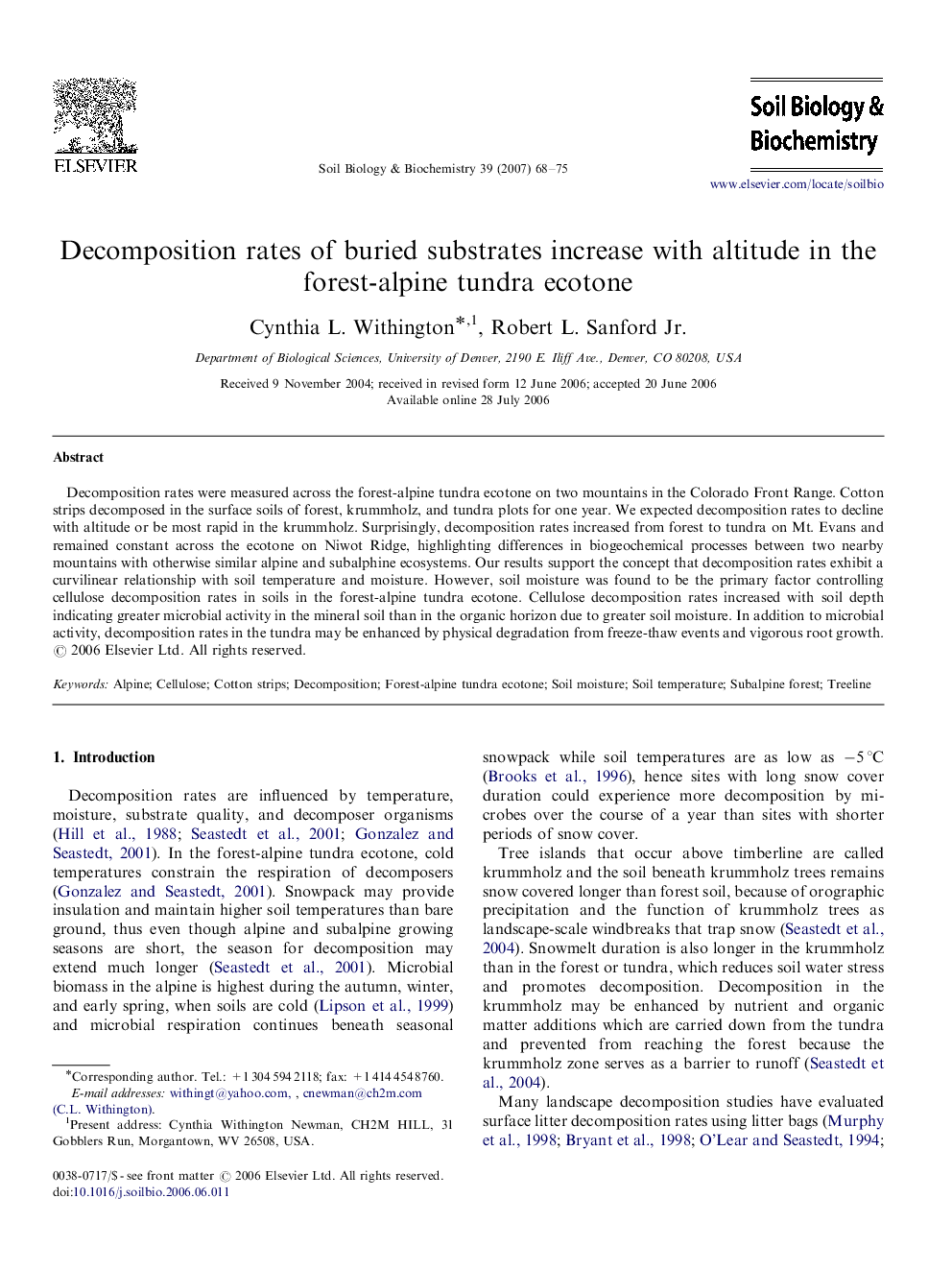| Article ID | Journal | Published Year | Pages | File Type |
|---|---|---|---|---|
| 2025866 | Soil Biology and Biochemistry | 2007 | 8 Pages |
Decomposition rates were measured across the forest-alpine tundra ecotone on two mountains in the Colorado Front Range. Cotton strips decomposed in the surface soils of forest, krummholz, and tundra plots for one year. We expected decomposition rates to decline with altitude or be most rapid in the krummholz. Surprisingly, decomposition rates increased from forest to tundra on Mt. Evans and remained constant across the ecotone on Niwot Ridge, highlighting differences in biogeochemical processes between two nearby mountains with otherwise similar alpine and subalphine ecosystems. Our results support the concept that decomposition rates exhibit a curvilinear relationship with soil temperature and moisture. However, soil moisture was found to be the primary factor controlling cellulose decomposition rates in soils in the forest-alpine tundra ecotone. Cellulose decomposition rates increased with soil depth indicating greater microbial activity in the mineral soil than in the organic horizon due to greater soil moisture. In addition to microbial activity, decomposition rates in the tundra may be enhanced by physical degradation from freeze-thaw events and vigorous root growth.
